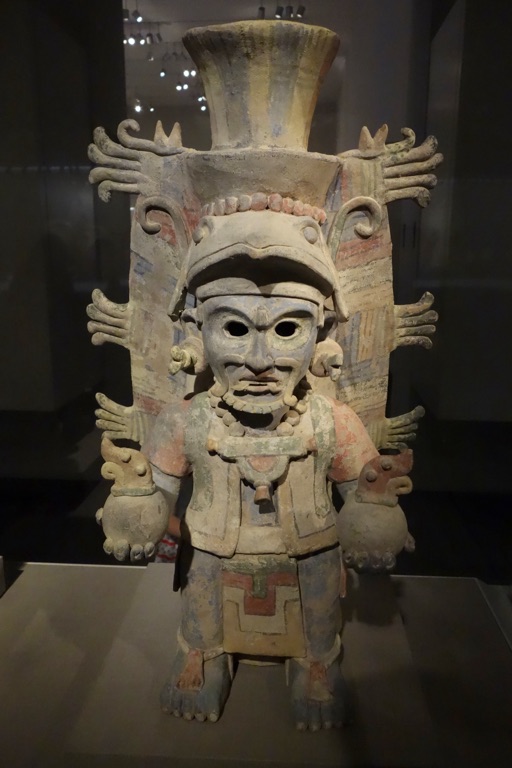Introduction to Huitzilopochtli
Overview of Huitzilopochtli
Huitzilopochtli, a central deity in Aztec mythology, stands as a god of the sun and war. His name, often translated as “Hummingbird of the South” or “Hummingbird on the Left,” reflects his significant attributes and the Aztec’s deep reverence for him. As a patron god of the Mexica (Aztec people), Huitzilopochtli’s influence permeated various aspects of Aztec culture, from warfare to religious practices.
Get your dose of History via Email
The Mythology of Huitzilopochtli
Huitzilopochtli’s mythology is rich with tales of creation, battle, and guidance. According to Aztec mythology, he was born fully armed from his mother Coatlicue to lead and protect the Mexica. His narratives are not only stories of divine intervention but also reflections of the values and struggles of the Aztec people.
Significance in Aztec Culture
In Aztec culture, Huitzilopochtli symbolized the triumph of light over darkness, guiding the Mexica through their migrations and battles. His worship was integral to Aztec society, embodying the virtues of strength, perseverance, and the importance of fulfilling one’s destiny.
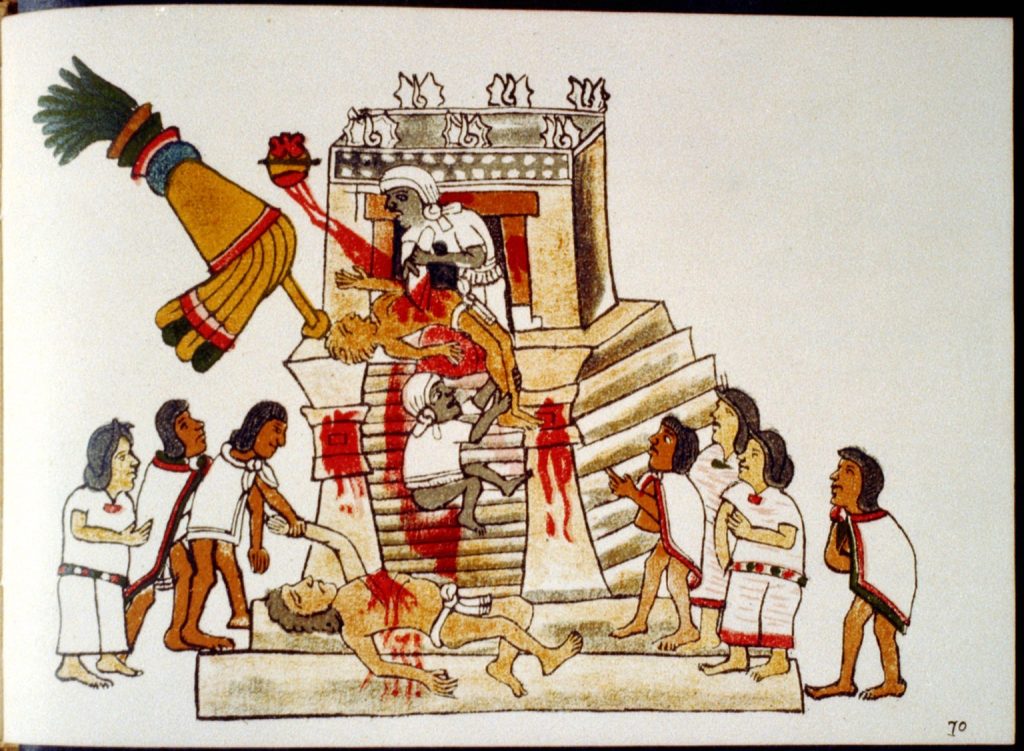
Huitzilopochtli’s Role in the Aztec Pantheon
Within the Aztec pantheon, Huitzilopochtli held a place of prominence as the patron deity of Tenochtitlan, the Aztec capital. His role extended beyond that of a war god; he was also a sun god, ensuring the sun’s journey across the sky each day, which was vital for maintaining cosmic order.
Mythological Stories Involving Huitzilopochtli
The Birth of Huitzilopochtli
The birth of Huitzilopochtli is a dramatic tale of divine conception and conflict. His mother, Coatlicue, became pregnant with him through a ball of feathers, inciting the wrath of her daughter Coyolxauhqui and her 400 sons, the Centzon Huitznahua. Huitzilopochtli emerged fully armed from his mother’s womb to defend her, symbolizing the birth of a new era for the Mexica.
The Battle Against Coyolxauhqui and the Centzon Huitznahua
The battle between Huitzilopochtli and his sister Coyolxauhqui, along with her brothers, is a foundational myth of the Aztec empire. This conflict, resulting in Coyolxauhqui’s defeat, is commemorated in the Templo Mayor of Tenochtitlan, illustrating the theme of cosmic struggle and victory.
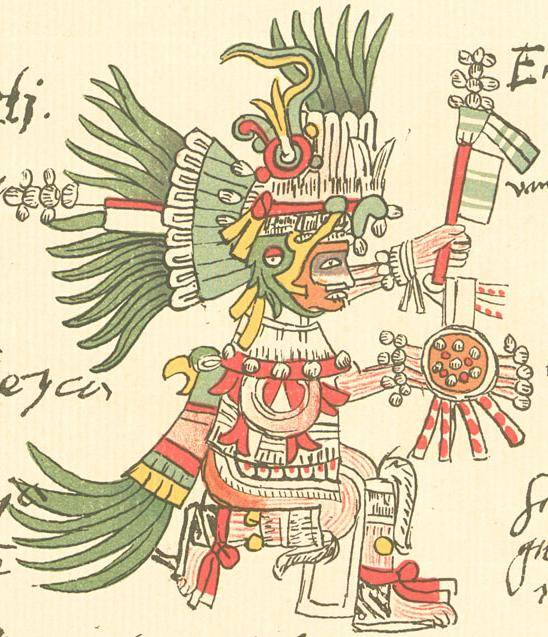
Huitzilopochtli and the Migration of the Mexica
Huitzilopochtli played a pivotal role in the Mexica migration to the Valley of Mexico. According to legend, he guided them to their promised land, signified by an eagle perched on a nopal cactus, where they would establish Tenochtitlan. This journey underscores the themes of destiny and divine guidance in Aztec mythology.
Symbolic Interpretations of Huitzilopochtli’s Myths
The myths surrounding Huitzilopochtli are rich with symbolic meaning, reflecting the Aztec worldview. His stories embody the principles of struggle, sacrifice, and rebirth, serving as allegories for the cycles of nature and human experience.
Iconography and Symbols
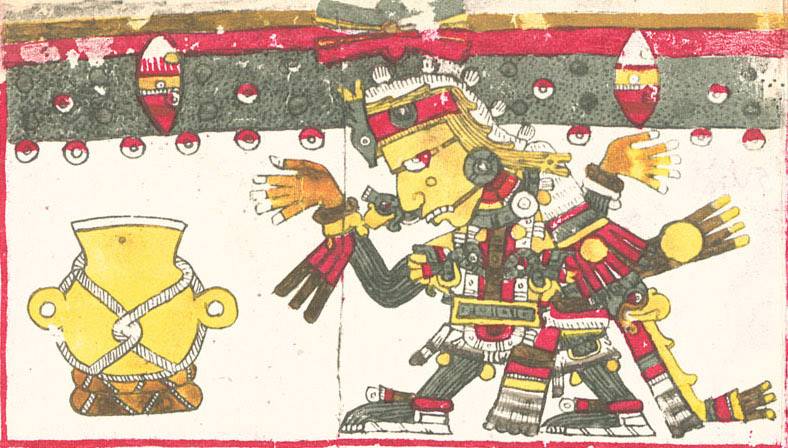
Description of Huitzilopochtli’s Iconography
Huitzilopochtli is often depicted in Aztec art as a fierce warrior adorned with feathers, carrying a shield and a spear-thrower (atlatl). His representations emphasize his martial nature and his association with the sun and fire.
The Significance of the Hummingbird and the Sun
The hummingbird, an emblem of Huitzilopochtli, symbolizes speed, agility, and resilience. As a sun god, his connection to the sun highlights themes of life, warmth, and renewal, central to Aztec cosmology.
Weapons and Tools Associated with Huitzilopochtli
Huitzilopochtli’s weapons, including the atlatl and the xiuhcoatl (a fire serpent), are symbols of his power and authority. These tools not only represent physical warfare but also the spiritual battle against darkness and chaos.
Interpretations of Symbols in Aztec Art and Culture
The symbols associated with Huitzilopochtli in Aztec art and culture convey deep spiritual and philosophical meanings. They reflect the Aztec’s engagement with themes of creation, destruction, and the perpetual cycle of life.
Worship and Rituals
The Templo Mayor and Its Significance to Huitzilopochtli Worship
The Templo Mayor in Tenochtitlan, dedicated in part to Huitzilopochtli, was the center of his worship. This monumental structure symbolized the god’s importance in Aztec society and served as a site for major religious ceremonies.
Annual Festivals and Ceremonies in Honor of Huitzilopochtli
Annual festivals, such as the Panquetzaliztli, celebrated Huitzilopochtli’s birth and victories. These ceremonies involved elaborate rituals, dances, and sacrifices, reinforcing the community’s social and religious bonds.
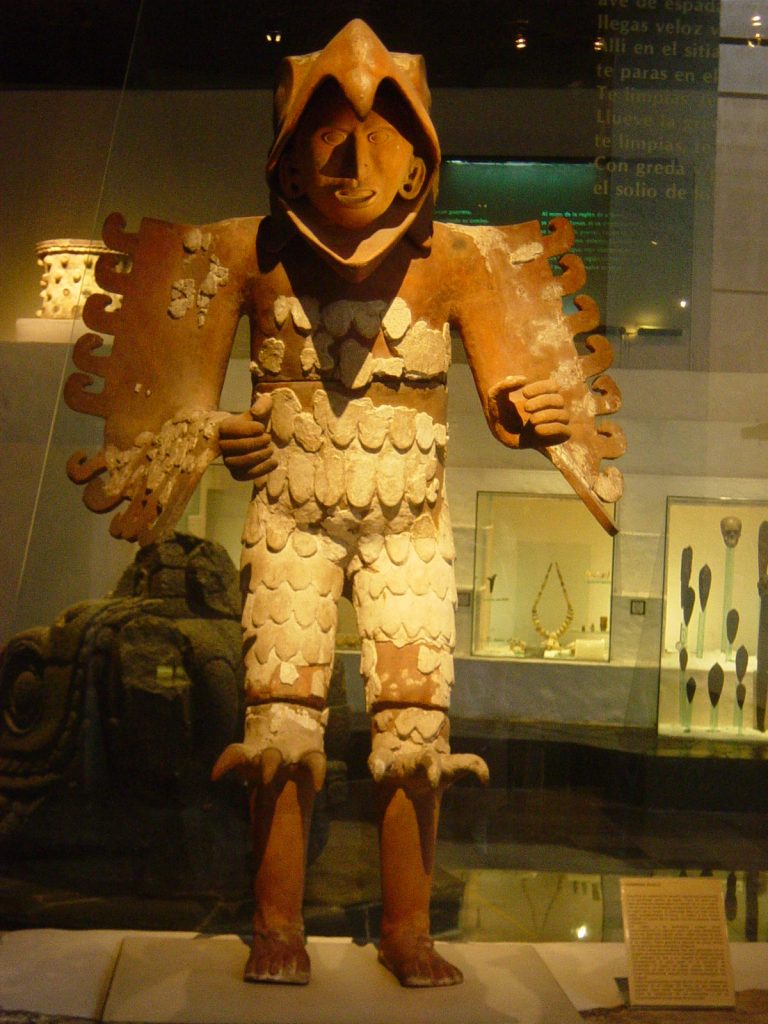
Human Sacrifice and Its Role in Worship
Human sacrifice played a crucial role in the worship of Huitzilopochtli, believed to sustain the god and ensure the sun’s movement. These sacrifices, often prisoners of war, underscored the connection between warfare, religion, and cosmic order.
Modern Interpretations and Remembrance of These Practices
Today, Huitzilopochtli’s worship and rituals are remembered as part of Mexico’s rich cultural heritage. Modern interpretations often focus on their symbolic significance, reflecting on the Aztec understanding of life’s cyclical nature and the importance of sacrifice.
Huitzilopochtli in Aztec Society
The Role of Huitzilopochtli in Aztec Warfare
Huitzilopochtli was not only a spiritual figure but also a symbol of martial prowess and victory. His influence inspired the Aztecs in their military endeavors, reinforcing the idea that warfare was a sacred duty.
Huitzilopochtli’s Influence on Aztec Leadership and Politics
As the patron deity of Tenochtitlan, Huitzilopochtli’s guidance was sought in leadership and political decisions. His will was interpreted by priests and rulers, shaping the destiny of the Aztec empire.
Teachings and Moral Lessons Derived from Huitzilopochtli’s Stories
The stories of Huitzilopochtli imparted moral lessons on courage, duty, and the importance of fulfilling one’s destiny. These narratives served as educational tools, instilling values and principles in Aztec society.
The Decline of Huitzilopochtli Worship After the Spanish Conquest
The Spanish conquest of the Aztec empire led to the decline of Huitzilopochtli worship, as Christian missionaries sought to eradicate indigenous beliefs. Despite this, the legacy of Huitzilopochtli endures in Mexican culture, symbolizing resilience and the enduring power of myth.

